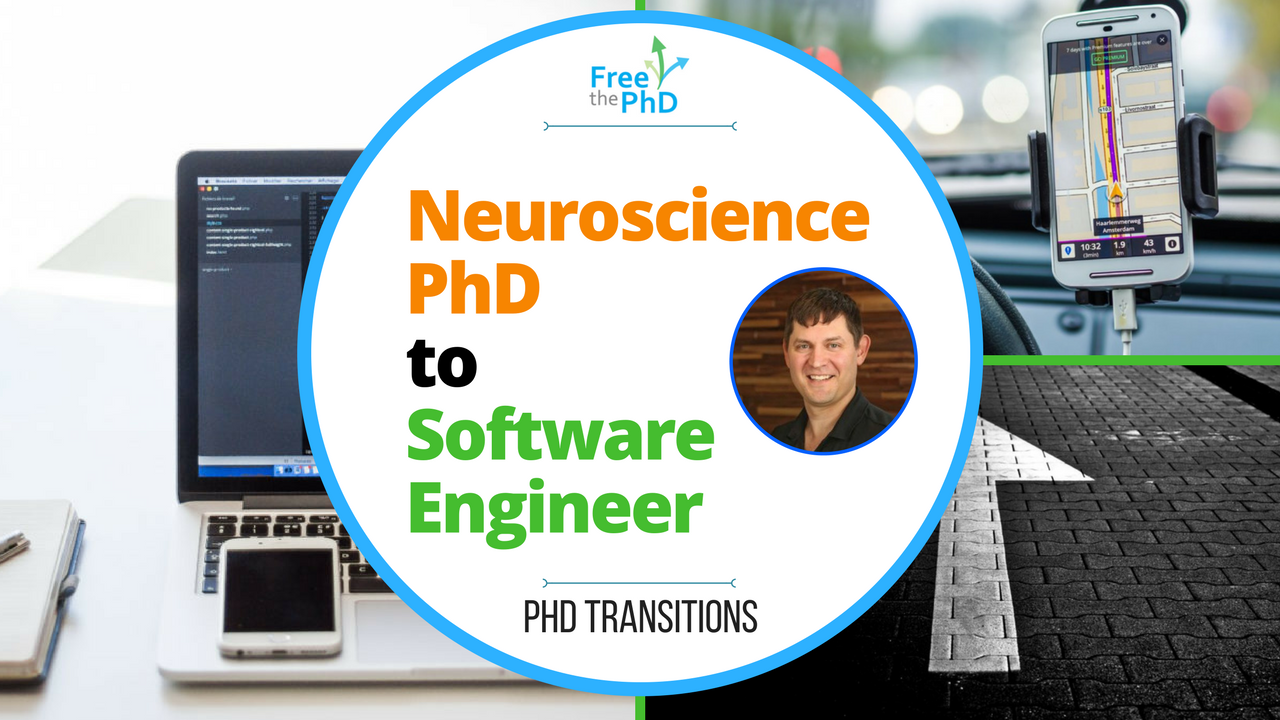A cross country move. Learning entirely new skillsets. Going from neuroscience benchwork to app prototyping – Tim Bellay found an exciting new career in the tech world as a Software & Prototype Engineer at Mile IQ after completing his PhD in neuroscience.
Starting the PhD
Tim started out on his research journey with the goal of academia in mind; after all, a PhD is a necessary, logical step on the road to professorship. Graduate level research also offered the promise of further research discoveries, especially after having completed a Masters and authoring original research.
As with most fellow PhDs, Tim started his doctoral research at the National Institutes of Health Graduate Partnerships Program with Brown University with high hopes and ample energy.
“I remember having the same awesome feeling every morning when setting foot on the NIH campus,” he said, “wondering what I would learn or discover that day. I was down with the hard work of researching and loved setting up experiments and analyzing data. I had come to the NIH because I thought it would accelerate my career and teach me the most about neuroscience. Things were looking great.
At the time, I really enjoyed going to the lab every day, and the prospect of discovering something new.”
Understanding Neural Activity
During his PhD, Tim took his master’s level synaptic level research to the next level up, focusing on neural networks and studying how they interacted.
“I was looking around for a way to study how groups of neurons formed these ensembles that processed information, which led me to the lab at the NIH where I studied balanced network activity,” he said.
“There, I was lucky to be able to use cutting edge tools to express and observe glowing calcium indicators in rat neurons and test some theories about the rules that govern heathy, ongoing neuronal activity.”

Mental Evolution Away from the Bench
As with many, if not most graduate students, the halfway mark in Tim’s PhD also marked the dawning of a new career conclusion.
“Reality was starting to settle in,” he said. “The rationalizations in favor of [academic] science that were protecting and driving me were no longer working as well as they did earlier in my career.”
Both the costly time burden of conducting a post-doc after graduate school, coupled with the career uncertainty that follows, were strong factors in his changing evaluation of the academic path.
An additional interest in business software was growing, and he found that his “secret interest was gaining more and more headspace over neuroscience.”
As with many people, what Tim found himself drawn to in his down time gave important clues as to what might be a promising direction for a new career – one in which he could rediscover the rewarding aspects of what he used to enjoy in academic science.
“I found my self engaged in tech podcasts whenever I could, mainly during my experiments,” he said. “Mobile app development was now peaking and I was starting to regret not pursuing tech instead of neuroscience, as I had taken a lot of CS classes along with neuroscience classes as part of my degree in cognitive science.”
Perhaps most importantly, the rewards and enjoyment of science were fast waning. The lack of positive reinforcement, “as every neuroscientist will tell you, is detrimental to the successful repetition of the behavior,” he said.
So Tim began doing what scientists do: gathering data for a new hypothesis – that maybe it was time to set the stage for a career change.
Luckily, it’s never too late to take on a new life experiment, especially when you control two of the main factors for success: embracing a new mindset, and putting in the work to take new steps forward.
“The first thing I did was talk to people I knew I could really trust, about what I should do in terms of my next career move,” he said.
“We began to narrow things down to becoming a data scientist or an app developer by discussing my interests and industry trends. Recall that I knew a lot of the tech landscape from my podcast listening and other research, so I had some vocabulary and could reason in this space.”

Pursuing New Experiences
Tim put in the time and energy to develop the skillsets needed to conduct his desired transition.
“I started to follow my growing passion and learn how to build an app, which involved internet research and reading a few books. I followed a lot of internet tutorials to learn objective-C, and while learning how to better program, transferred skills picked up in the lab, such as troubleshooting experimental setups to troubleshooting bugs in code.”
It took time, but his initial exercises turned into full-time projects and ultimately into the leverage he needed to transition.
“I was lucky to watch and learn [my brother’s] process, because it helped push me along to break down problems, and tackle the next most important part of a problem. While doing this, I was able to convince him eventually to let me do a low risk, but paid short stint and delivered some unit tests which one of his clients needed.”
“Then I was able to do a few more paid projects, each with increasing difficulty. These experiences gave me the ability to show what I could do at interviews.”
Keys to Freeing Your PhD
When making a transition from a PhD to a career path with very different baseline skillset expectations, there is just no getting out of putting in enough effort to see results.
“Getting out of graduate school with my PhD was extremely difficult, and so is getting a job in a different field,” he said. “These both require your full time attention. And probably more than you actually think. The good news is that I was mostly in control under both situations, and the bad news is that hard work is the only way out.
This means yes, updating your resume throughout, but also going to meetups centered on your new career and interests, and exploring leads and learning from others at different stages of the process. Use your scientific background as a starter to intrigue recruiters but come strong by showing what you’ve learned and what you can bring to your potential colleagues with the new skills you are learning. Take advantage of everything. I remember going to LinkedIn to get a free headshot and having someone look over my profile. All these little things add up.”

A Return to Problem Solving
Today, Tim works at a tech company, Mile IQ, that creates a drive-logging app that helps employees and entrepreneurs save time, effort and money. It’s a dynamic, engaging startup-like environment that keeps him intellectually engaged and always learning.
“You don’t ever stop solving problems,” he said. “I imagine most things are like coding, which is a lot like lifting weights – the big jumps in learning come after many hours of working on something. It’s that last rep or last hour of coding that really builds the muscle here.
But luckily if you have the stamina to complete your PhD, I think one could learn to professionally code.”
Which means if you’re looking to make a significant career transition like Tim, there’s definitely no time or energy to waste!
By Vay Cao, PhD
Not afraid of hard work? Looking to Free your PhD and evolve your own career? Join the Free the PhD email list for behind the scenes details on transitions, or reach out for a 1:1 session to advance your career.

